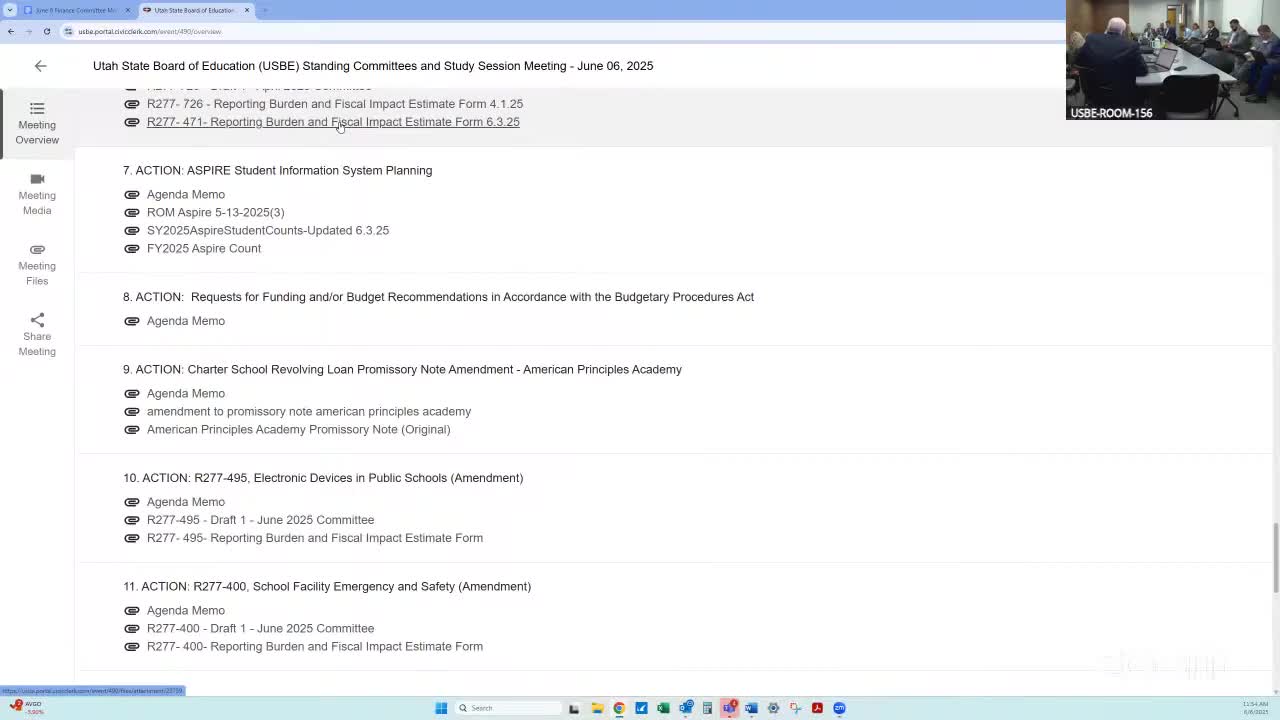Committee seeks funding for master pilot program to enhance teacher retention
June 07, 2025 | Financial Operations , Utah Board of Education, Offices, Departments, and Divisions, Organizations, Utah Executive Branch, Utah
This article was created by AI summarizing key points discussed. AI makes mistakes, so for full details and context, please refer to the video of the full meeting. Please report any errors so we can fix them. Report an error »

In a recent meeting of Utah's Finance Committee, passionate discussions unfolded around the importance of arts education and teacher retention programs, highlighting the intersection of creativity and academic success. As committee members gathered, the atmosphere buzzed with a shared commitment to enhancing educational standards and funding initiatives that support both students and teachers.
One of the key topics was the ongoing debate about funding for arts programs in schools. A committee member passionately argued that the arts are essential to a well-rounded education, stating, "The arts are inherently the 365-degree subjects." This sentiment echoed throughout the meeting, as members emphasized that arts education not only enriches students' learning experiences but also correlates with higher SAT and ACT scores. Statistics revealed that a significant percentage of high-achieving students had participated in advanced arts programs, underscoring the argument for continued funding.
Despite the compelling case for arts education, some committee members expressed concerns about the reluctance of certain leaders to allocate necessary funds. "I’ll keep fighting," one member declared, reinforcing the belief that arts should be recognized as core subjects. The discussion highlighted a broader issue: the need for educational policies that prioritize comprehensive learning experiences.
In addition to the arts, the committee also focused on a pilot program aimed at improving teacher retention through leadership opportunities. This initiative, which has shown promising results in its first year, aims to provide teachers with the chance to take on leadership roles while remaining in the classroom. "Programs of this nature nationally have greater retention rates for teachers," one member noted, emphasizing the positive impact on teacher morale and student outcomes.
As the meeting progressed, members agreed to prepare a funding request for the continuation of this master pilot program, recognizing its potential to invigorate the teaching workforce. The excitement surrounding the program was palpable, with reports of overwhelming support from participating local education agencies.
The discussions at this meeting not only highlighted the critical need for funding in arts education and teacher support but also reflected a broader commitment to fostering an educational environment where creativity and leadership can thrive. As the committee prepares to present their funding requests, the future of arts education and teacher retention in Utah hangs in the balance, with the potential to shape the next generation of learners and educators.
One of the key topics was the ongoing debate about funding for arts programs in schools. A committee member passionately argued that the arts are essential to a well-rounded education, stating, "The arts are inherently the 365-degree subjects." This sentiment echoed throughout the meeting, as members emphasized that arts education not only enriches students' learning experiences but also correlates with higher SAT and ACT scores. Statistics revealed that a significant percentage of high-achieving students had participated in advanced arts programs, underscoring the argument for continued funding.
Despite the compelling case for arts education, some committee members expressed concerns about the reluctance of certain leaders to allocate necessary funds. "I’ll keep fighting," one member declared, reinforcing the belief that arts should be recognized as core subjects. The discussion highlighted a broader issue: the need for educational policies that prioritize comprehensive learning experiences.
In addition to the arts, the committee also focused on a pilot program aimed at improving teacher retention through leadership opportunities. This initiative, which has shown promising results in its first year, aims to provide teachers with the chance to take on leadership roles while remaining in the classroom. "Programs of this nature nationally have greater retention rates for teachers," one member noted, emphasizing the positive impact on teacher morale and student outcomes.
As the meeting progressed, members agreed to prepare a funding request for the continuation of this master pilot program, recognizing its potential to invigorate the teaching workforce. The excitement surrounding the program was palpable, with reports of overwhelming support from participating local education agencies.
The discussions at this meeting not only highlighted the critical need for funding in arts education and teacher support but also reflected a broader commitment to fostering an educational environment where creativity and leadership can thrive. As the committee prepares to present their funding requests, the future of arts education and teacher retention in Utah hangs in the balance, with the potential to shape the next generation of learners and educators.
View full meeting
This article is based on a recent meeting—watch the full video and explore the complete transcript for deeper insights into the discussion.
View full meeting

